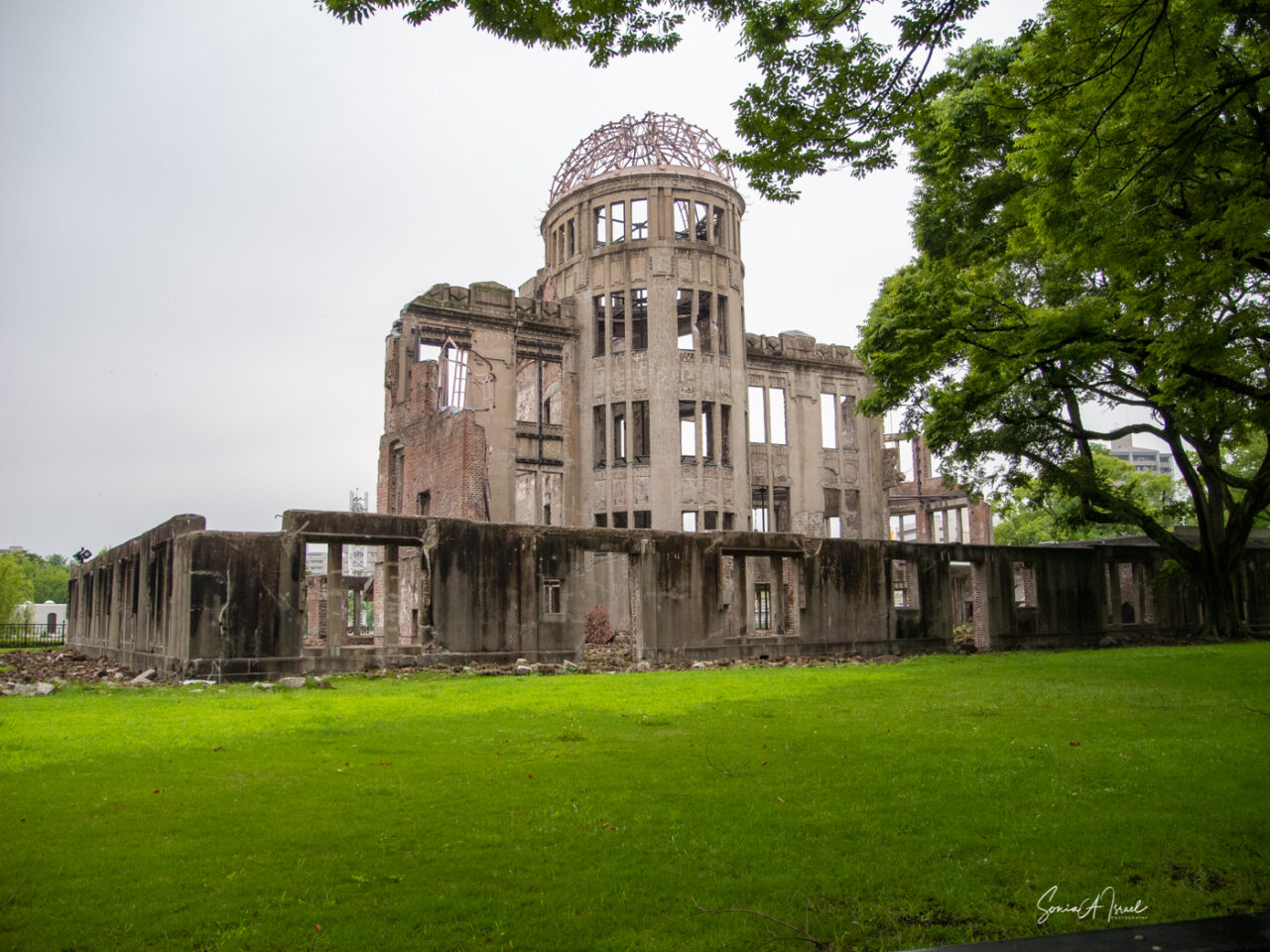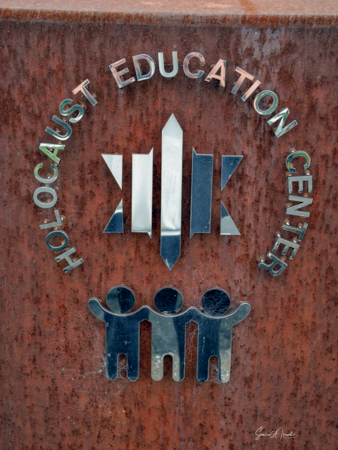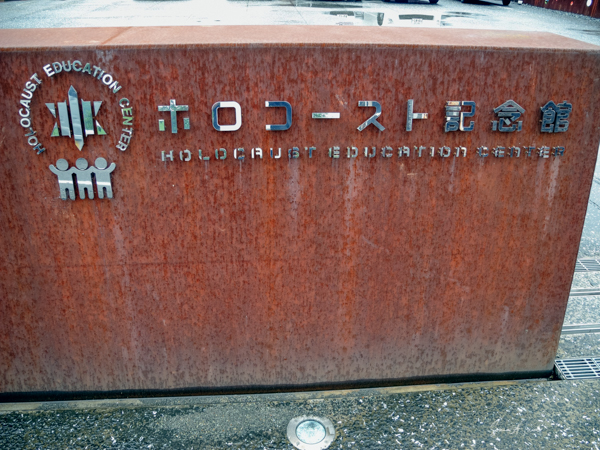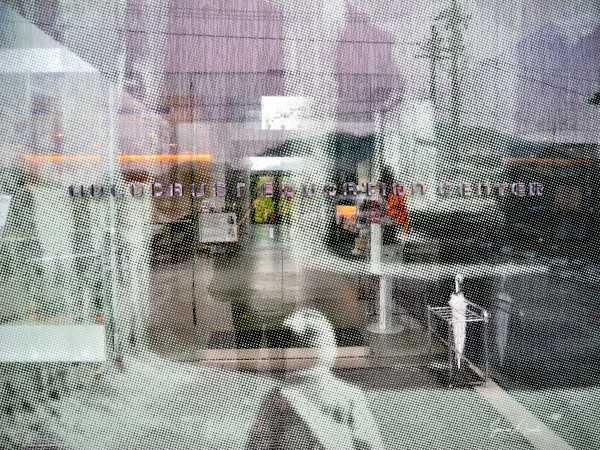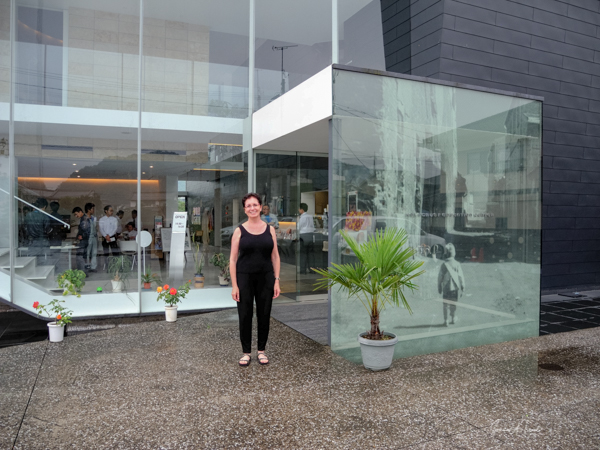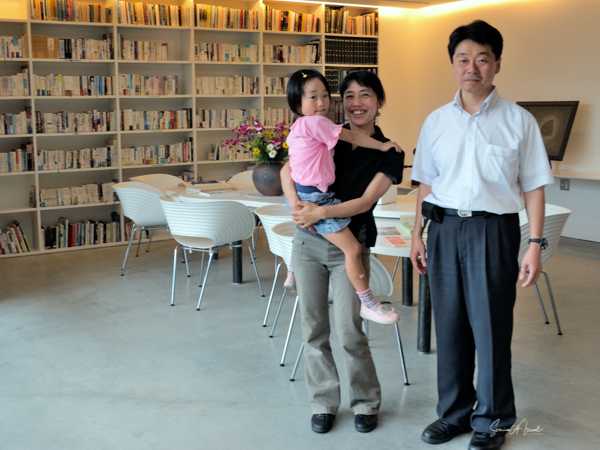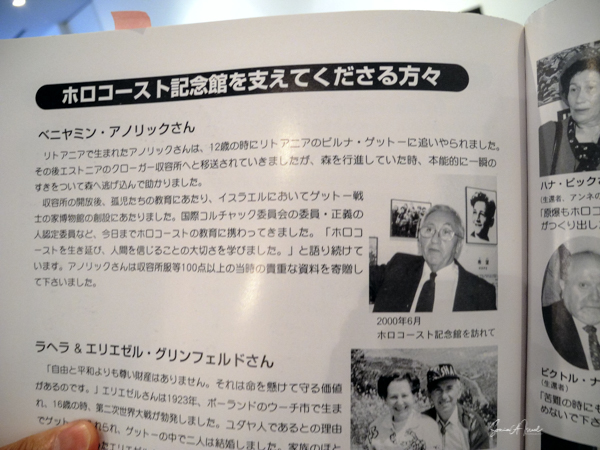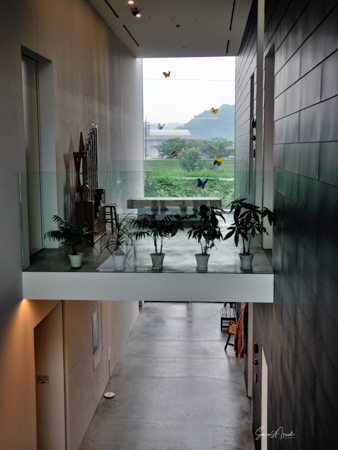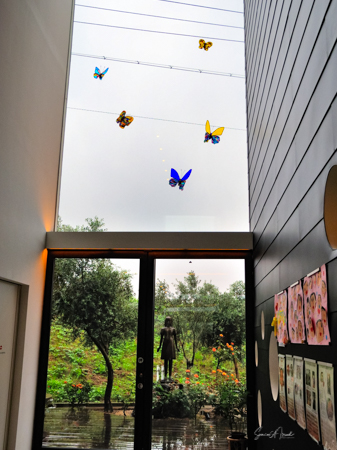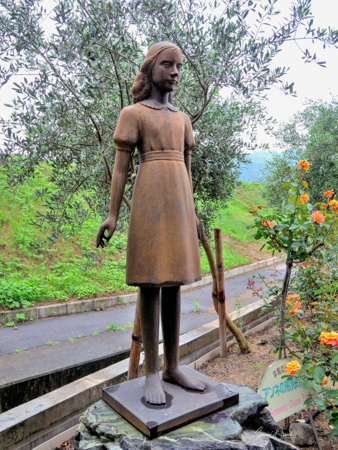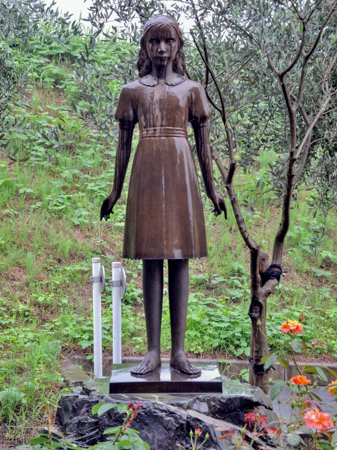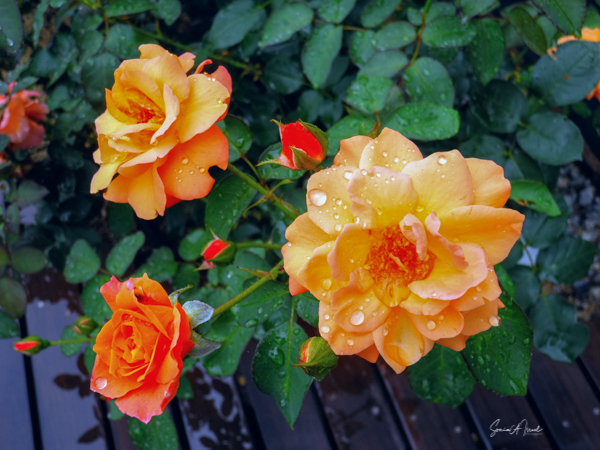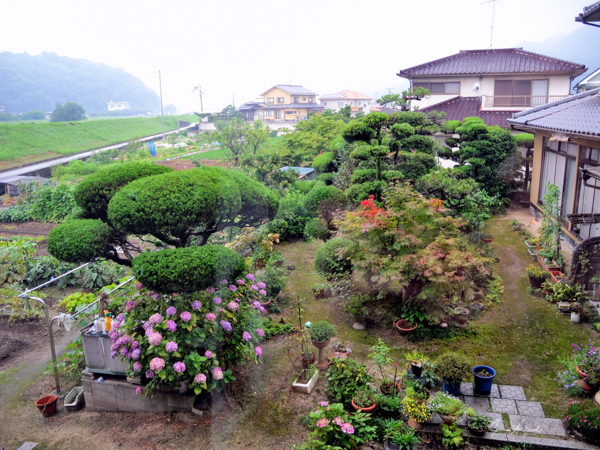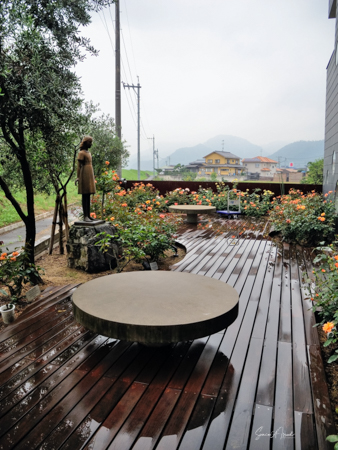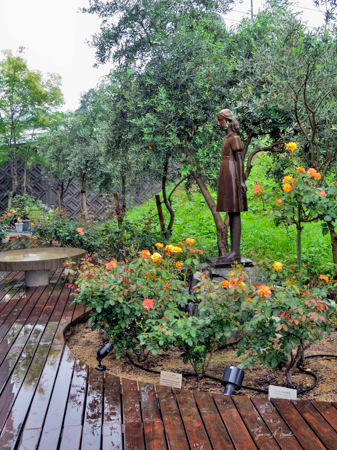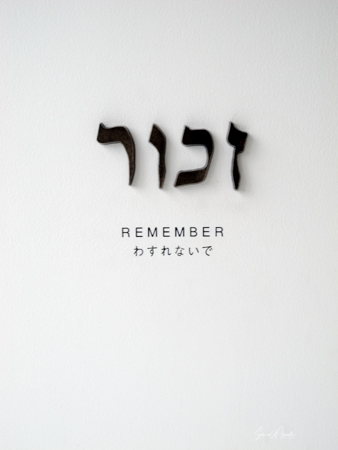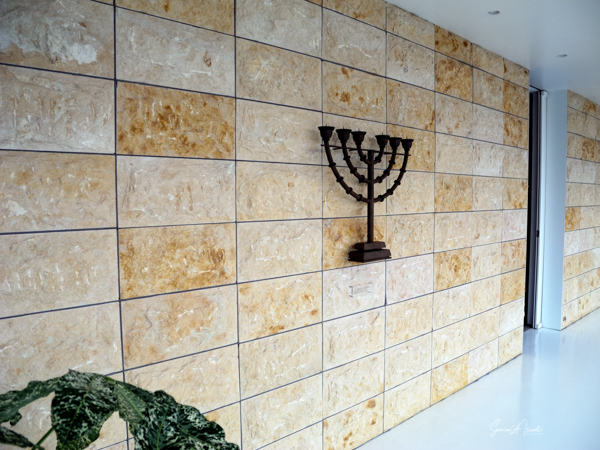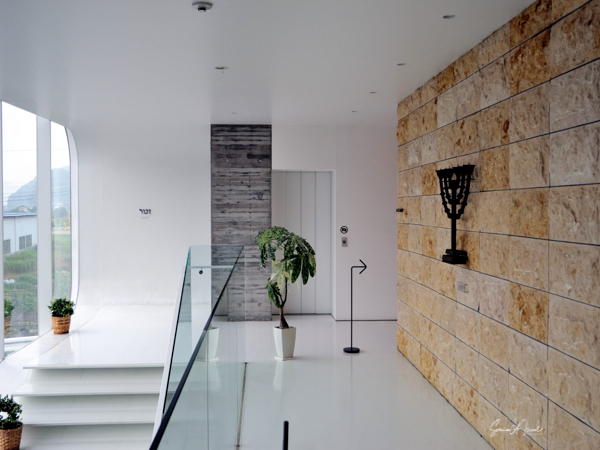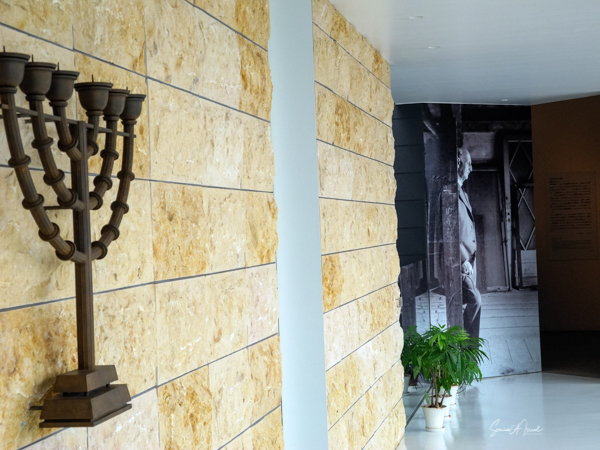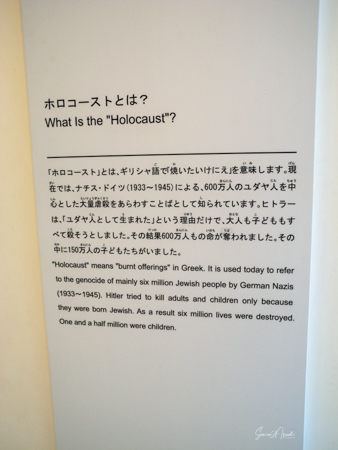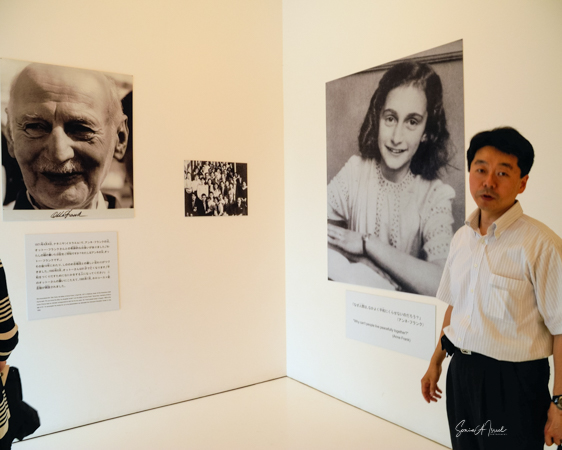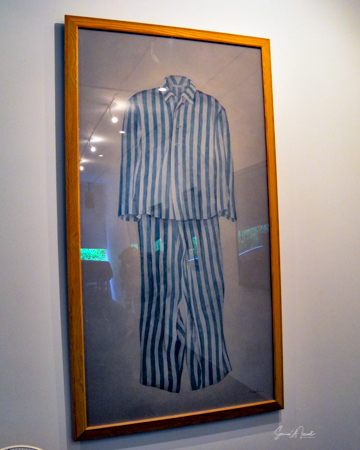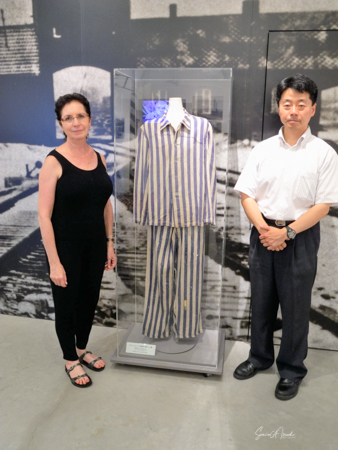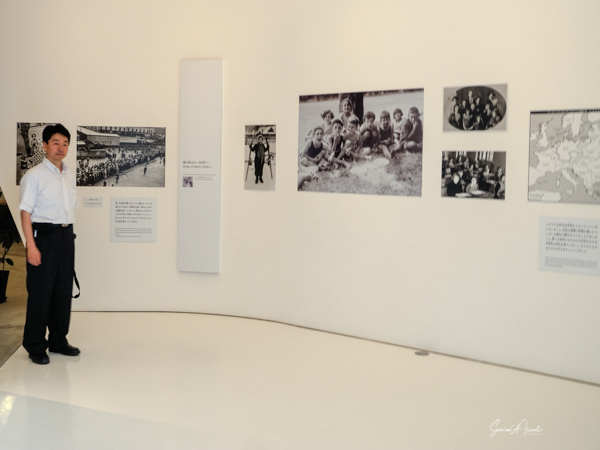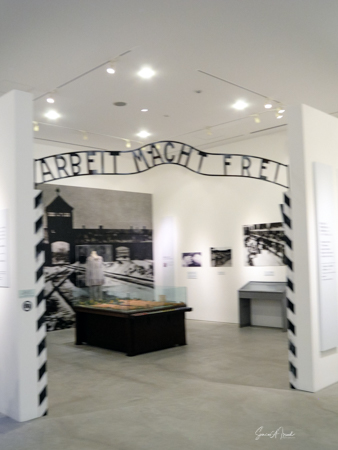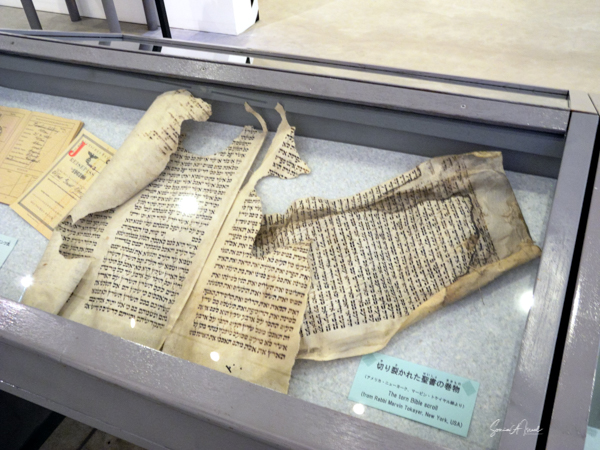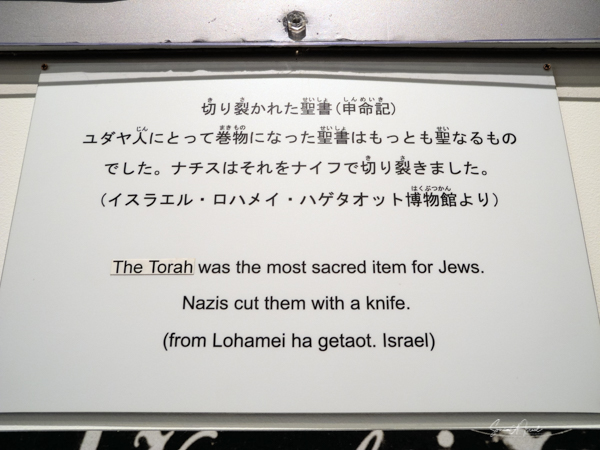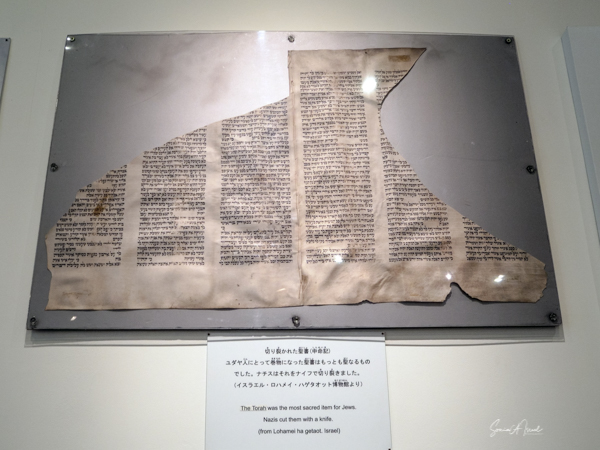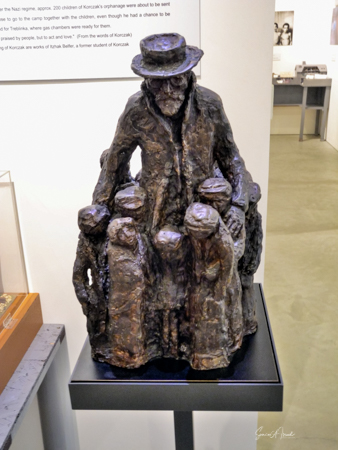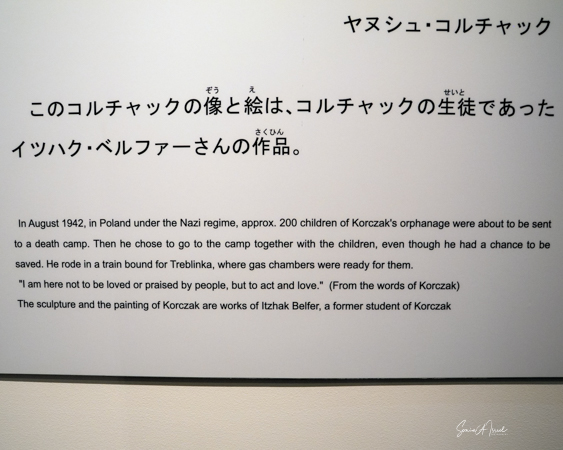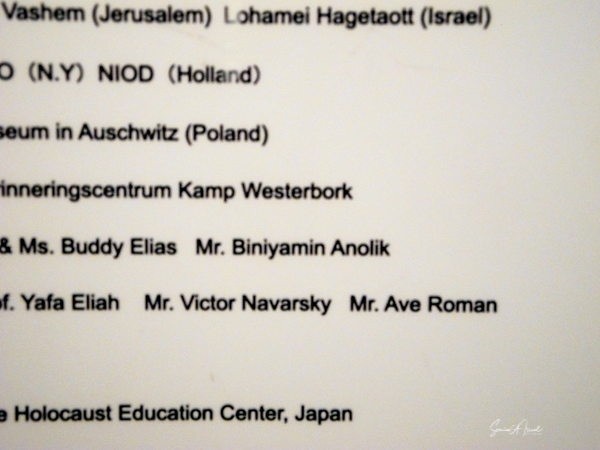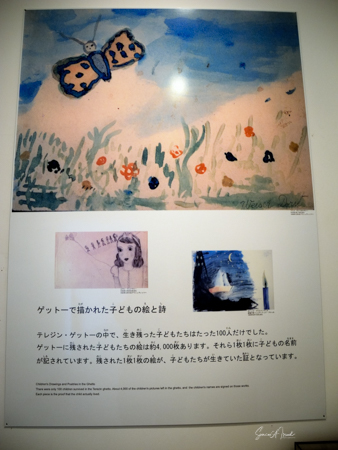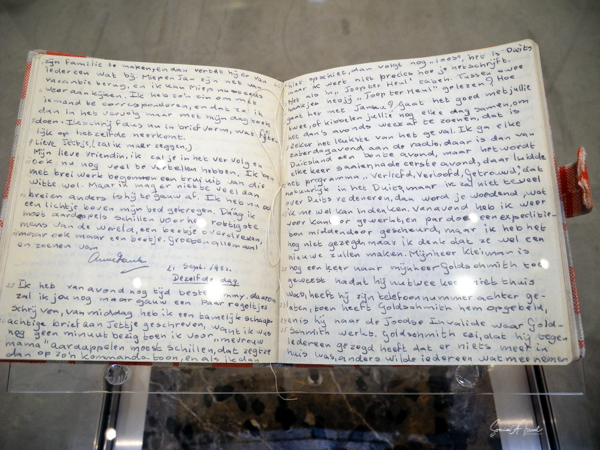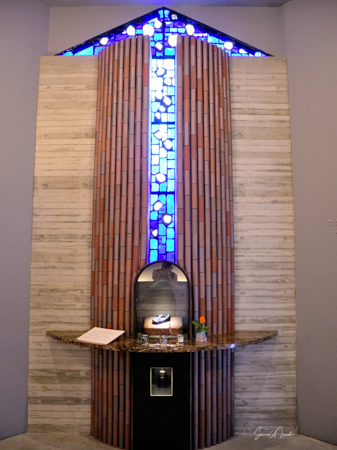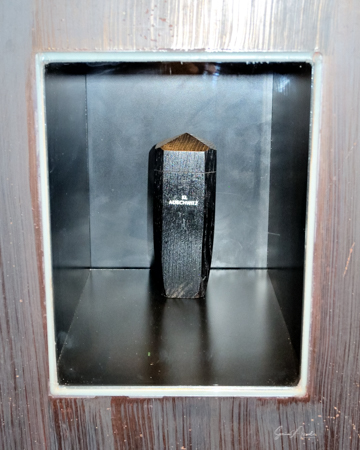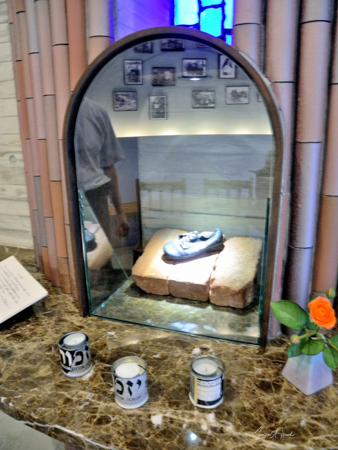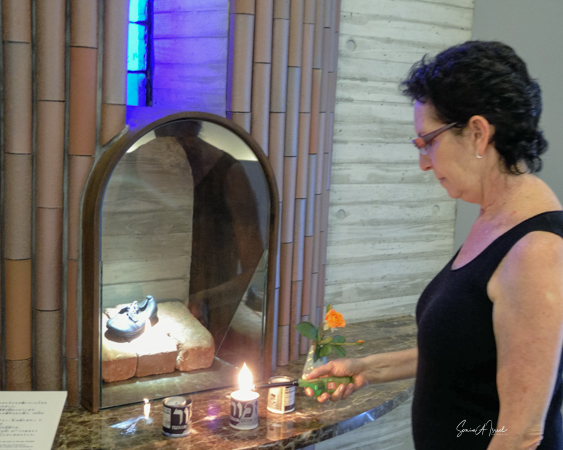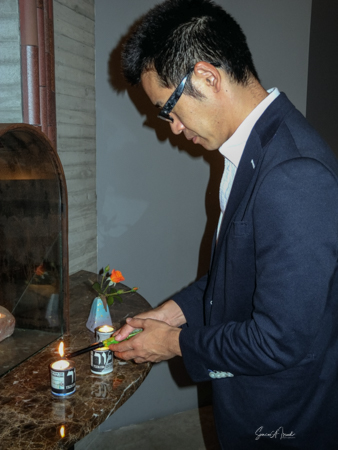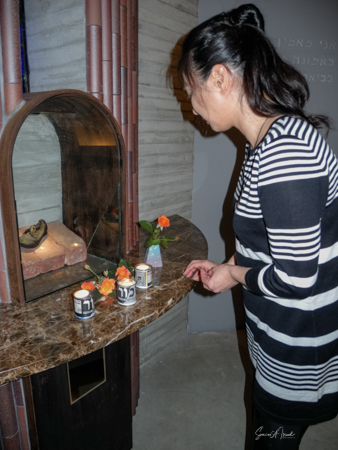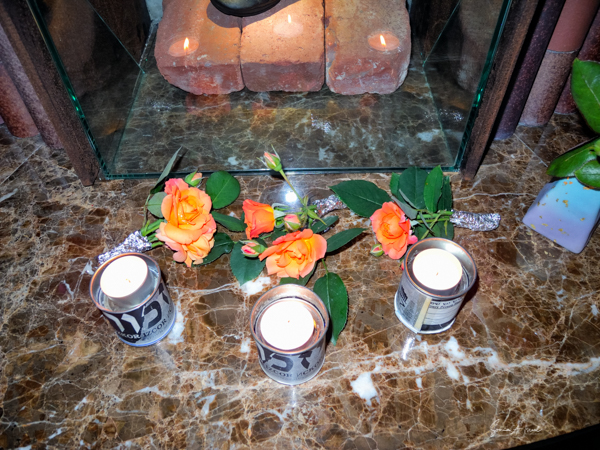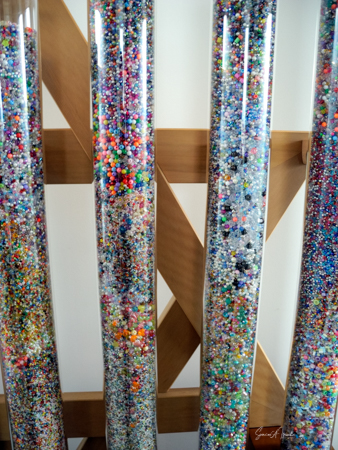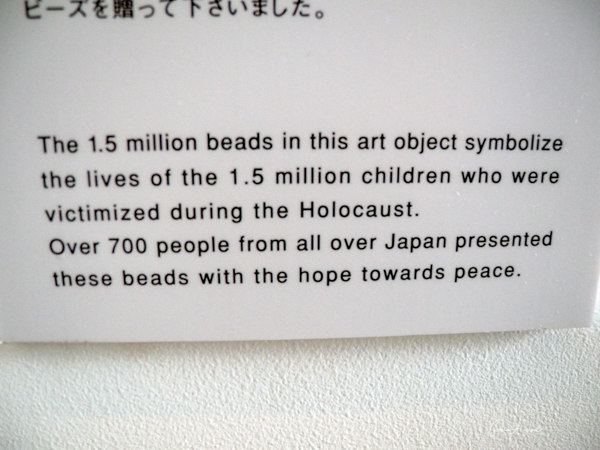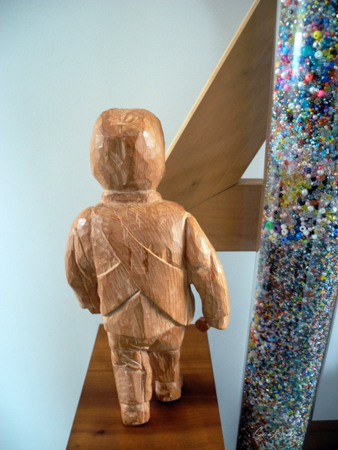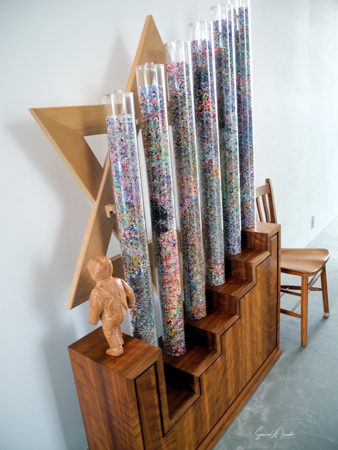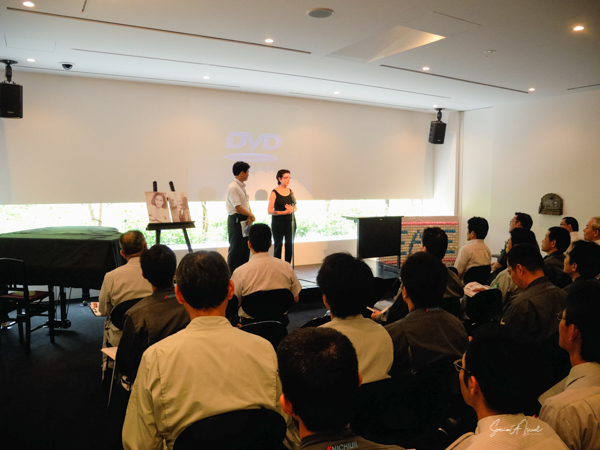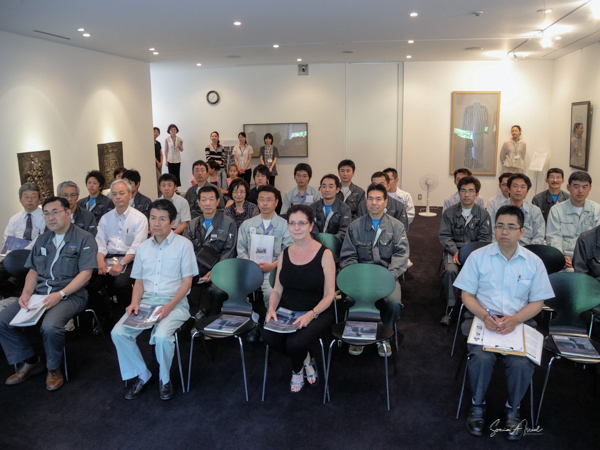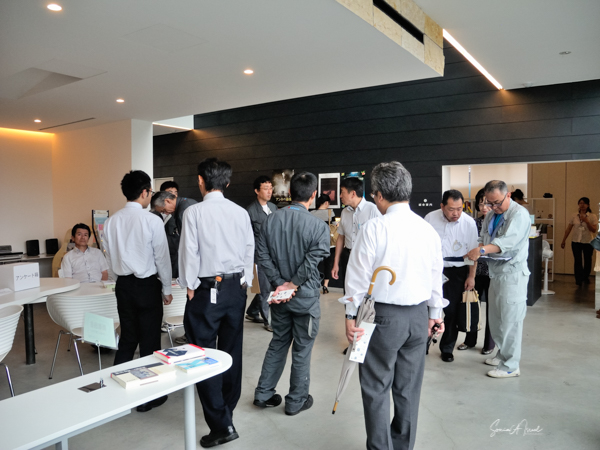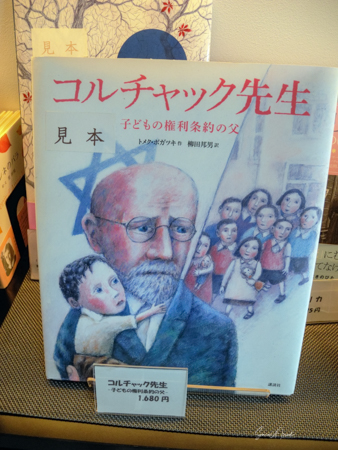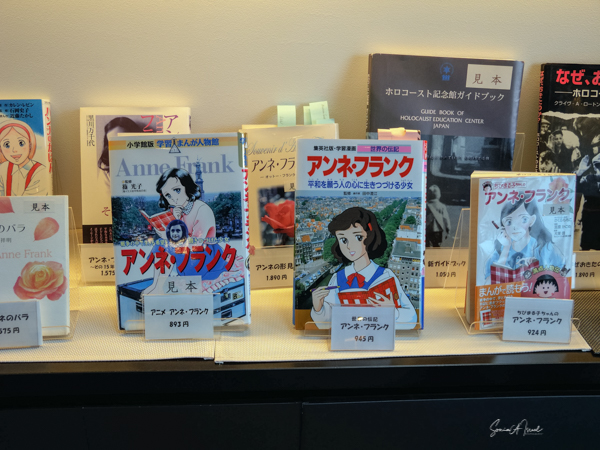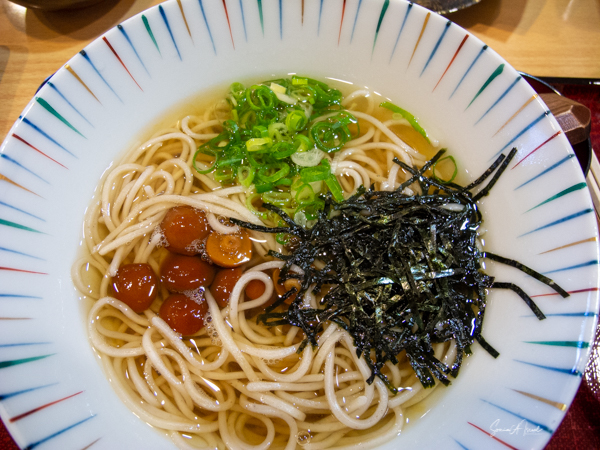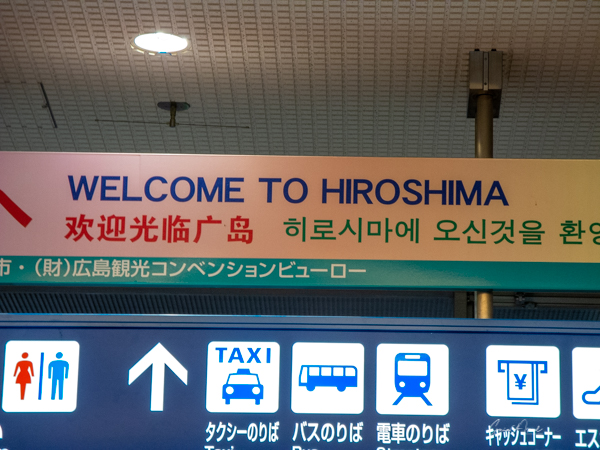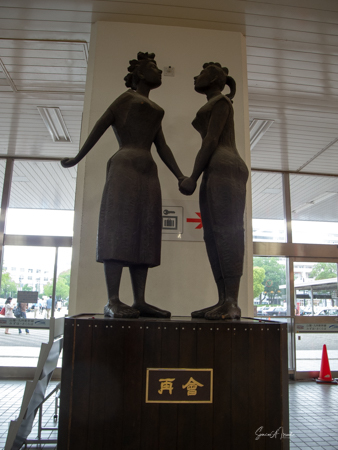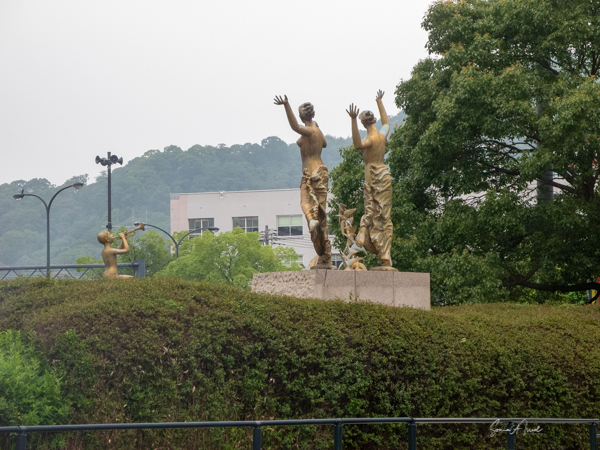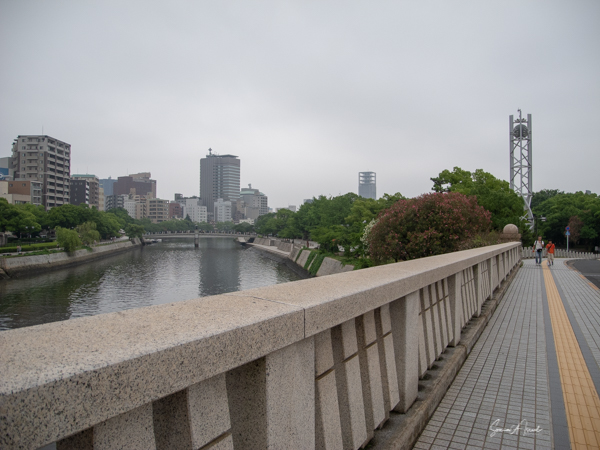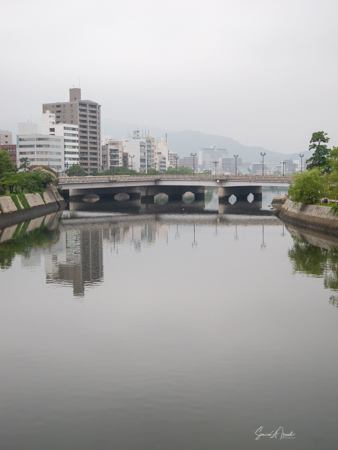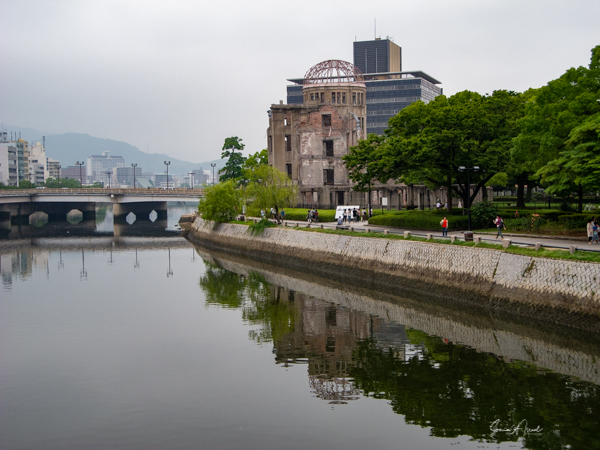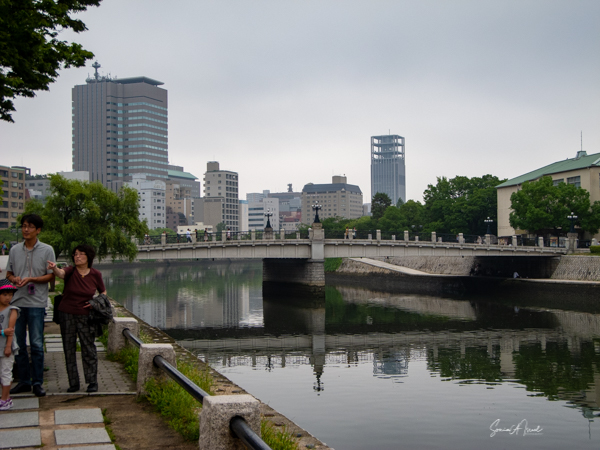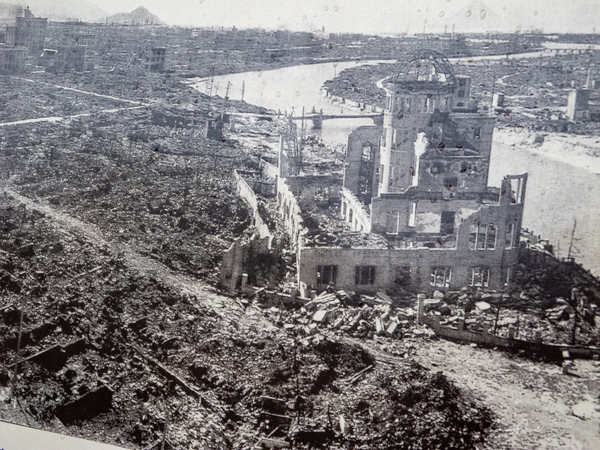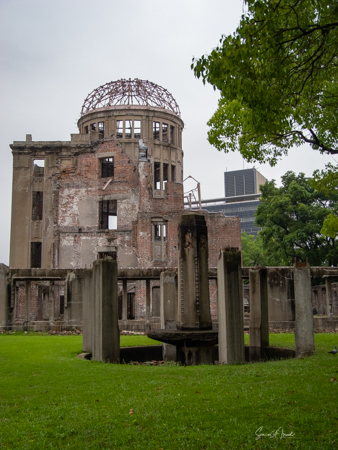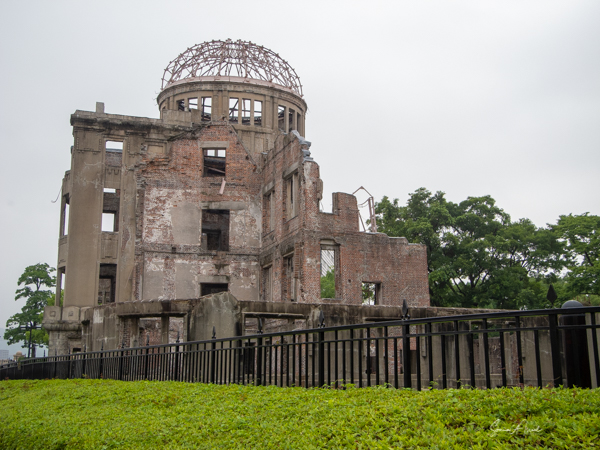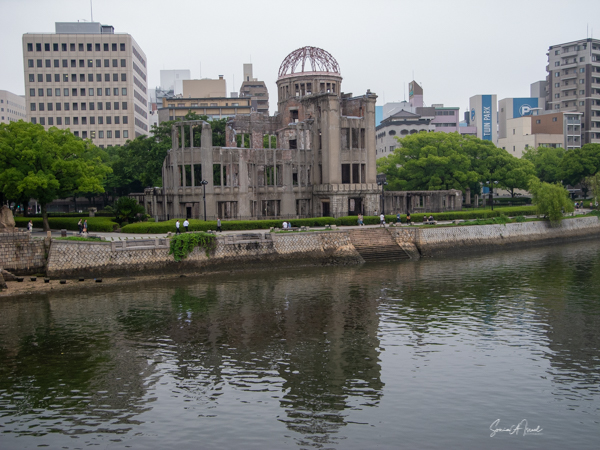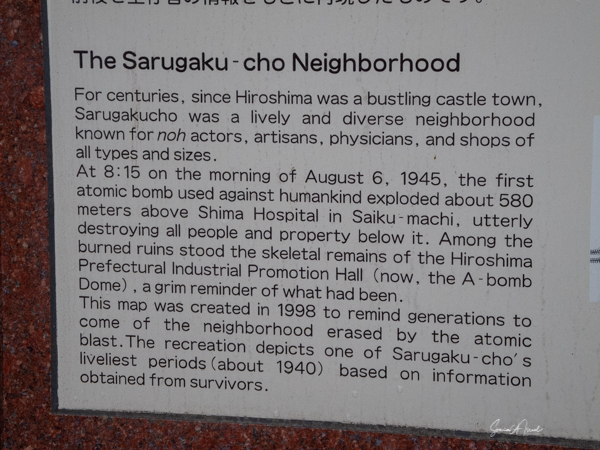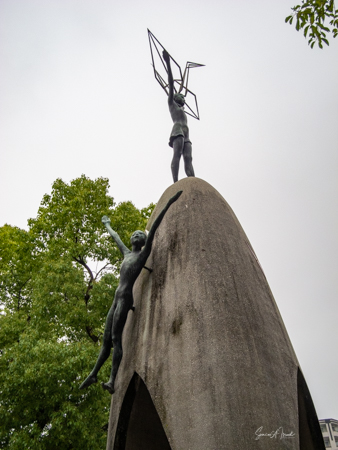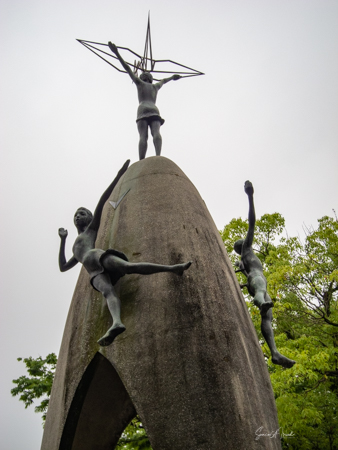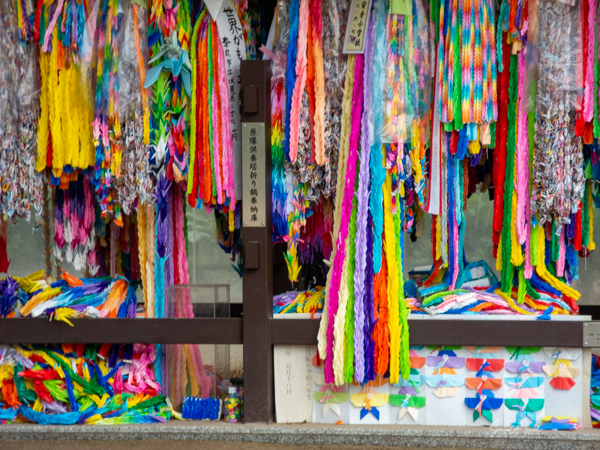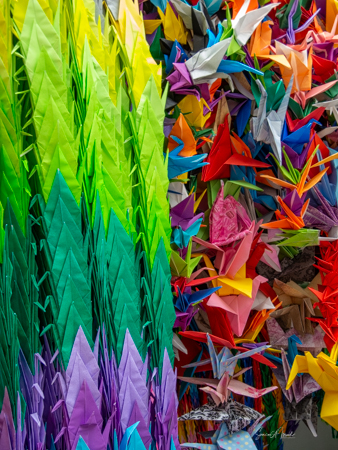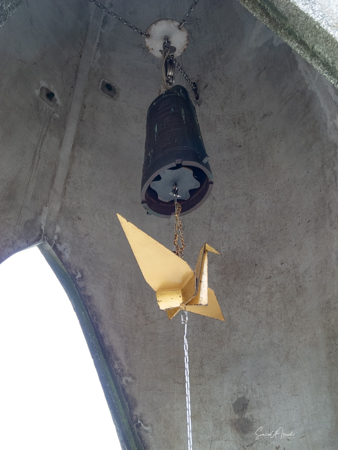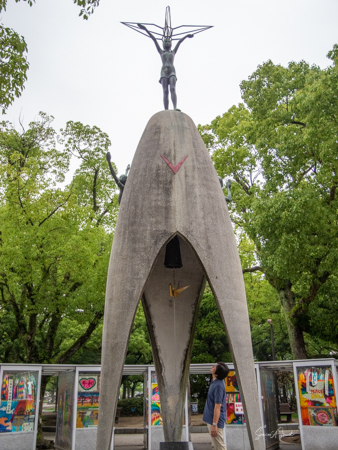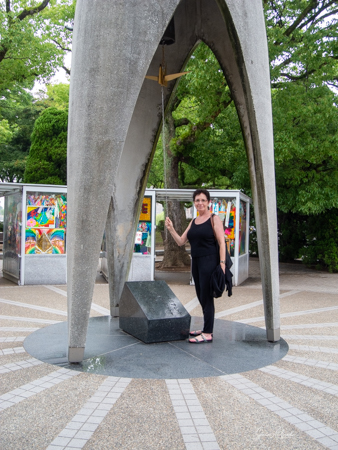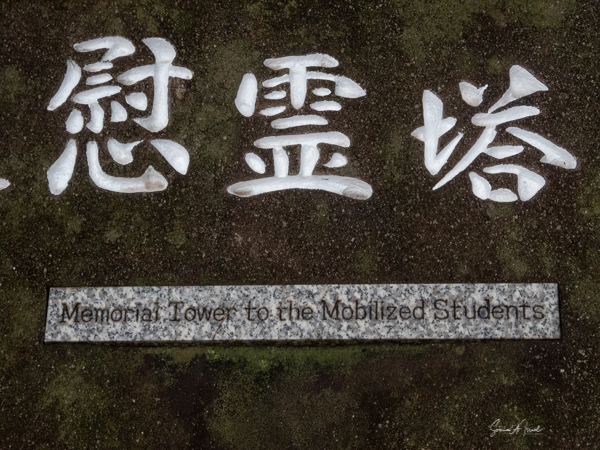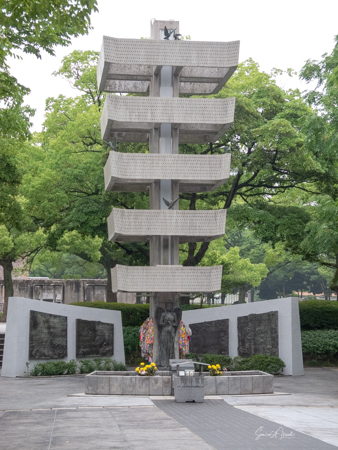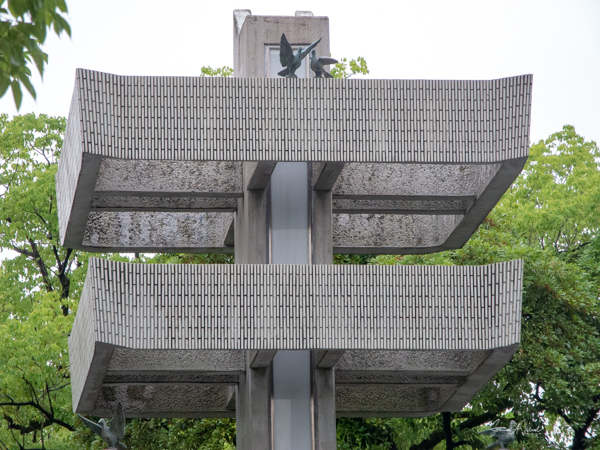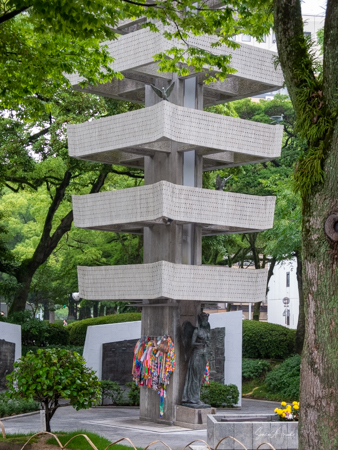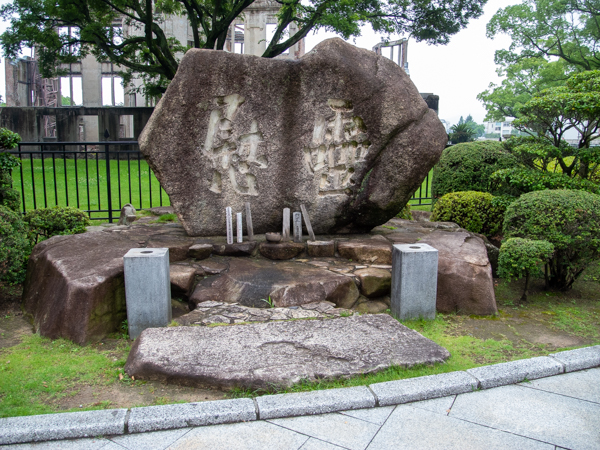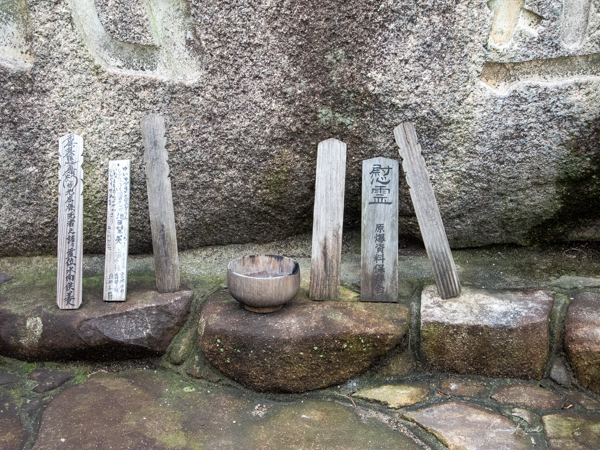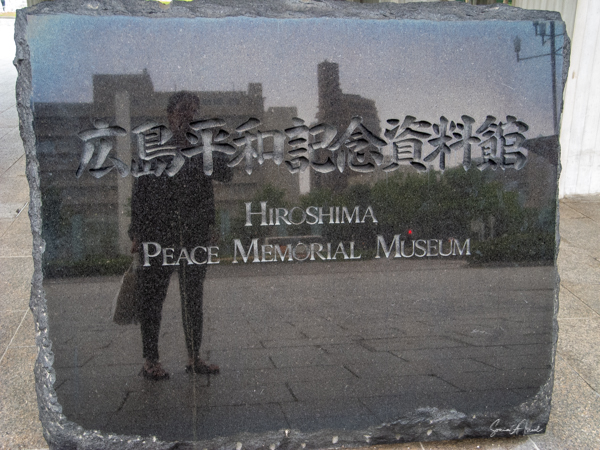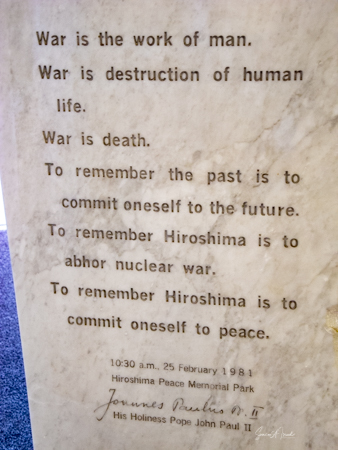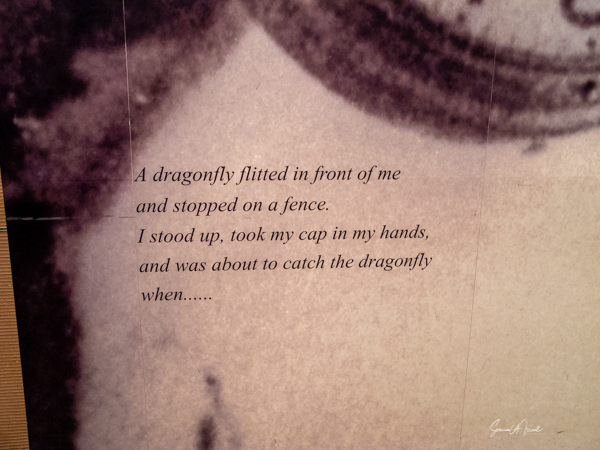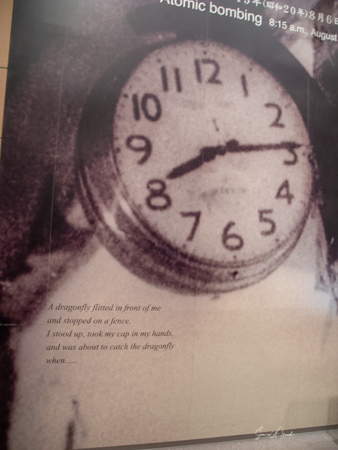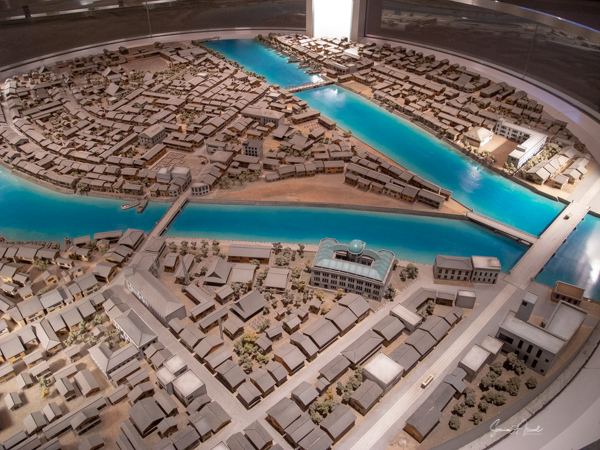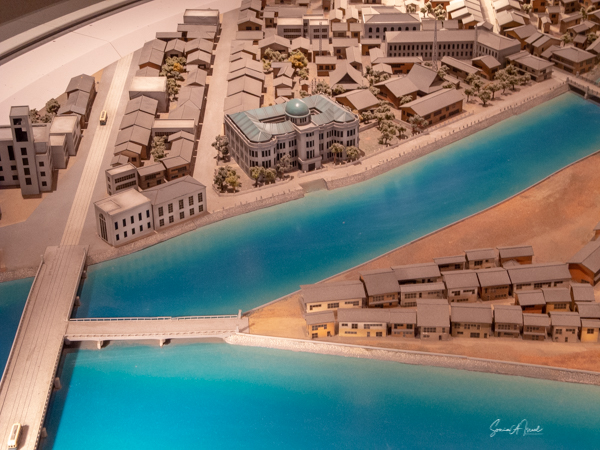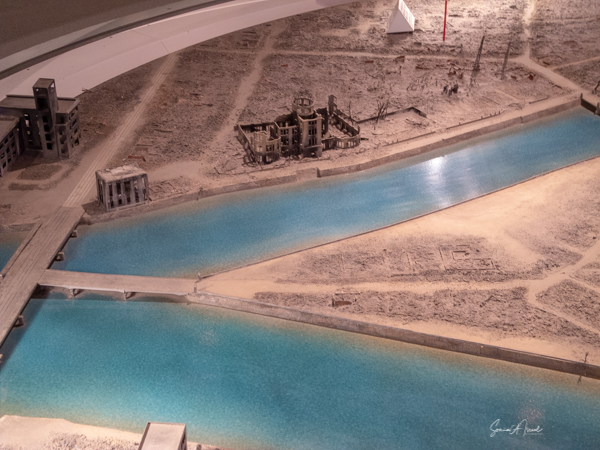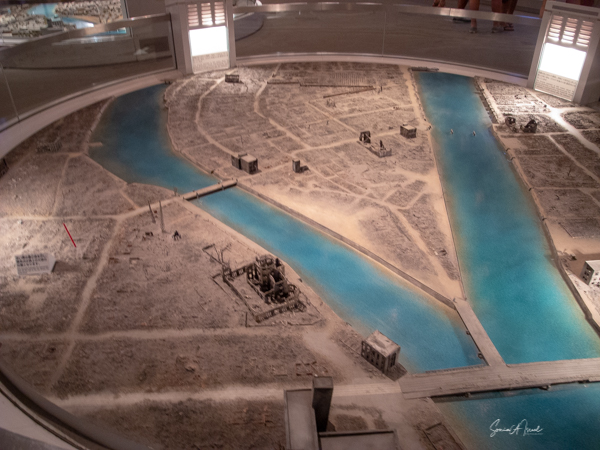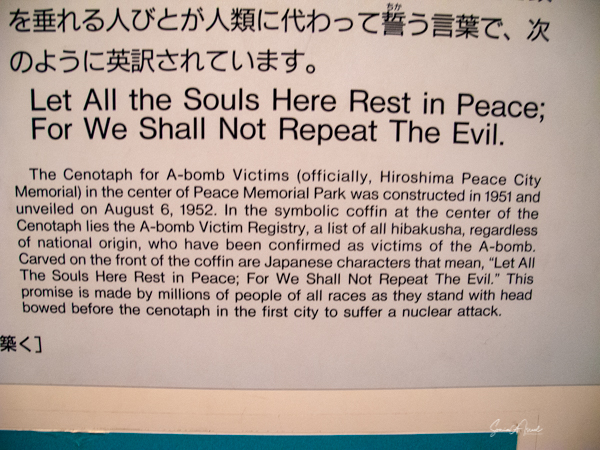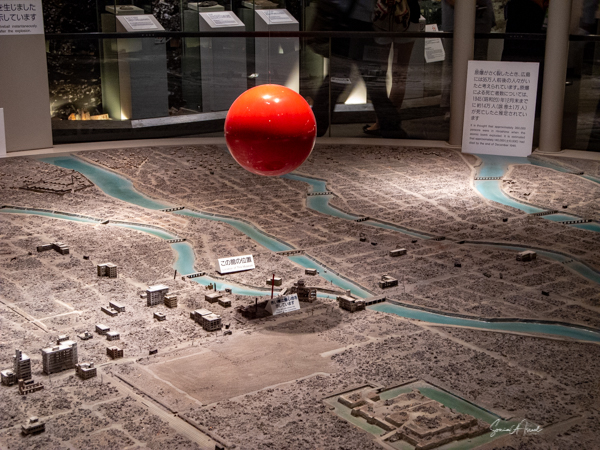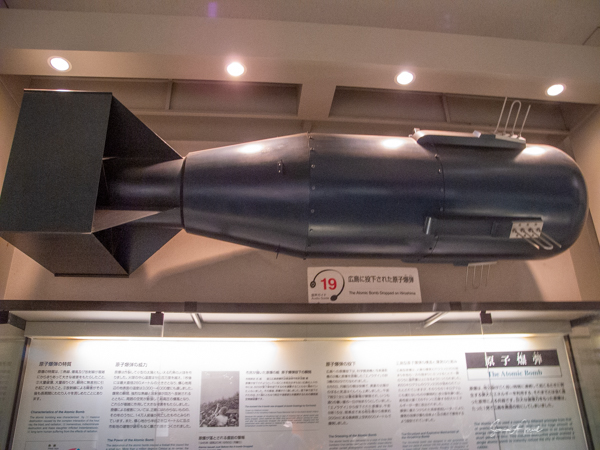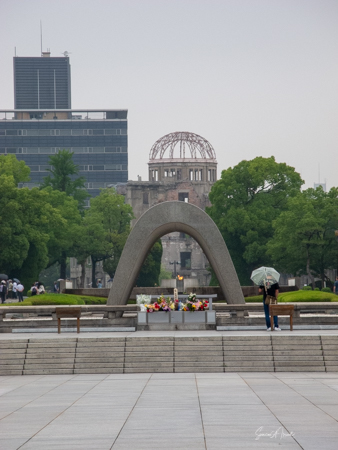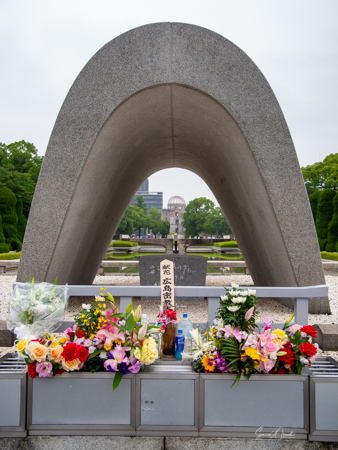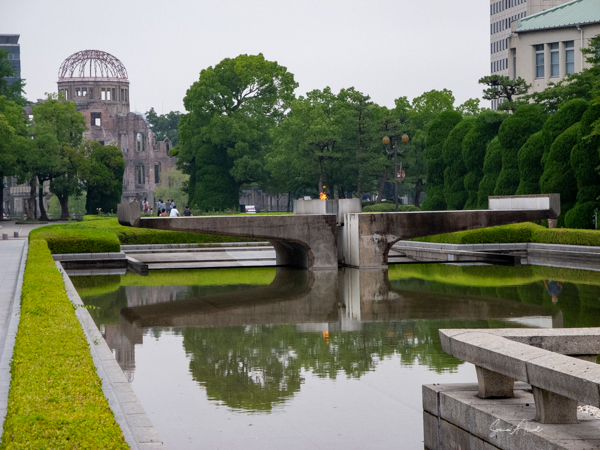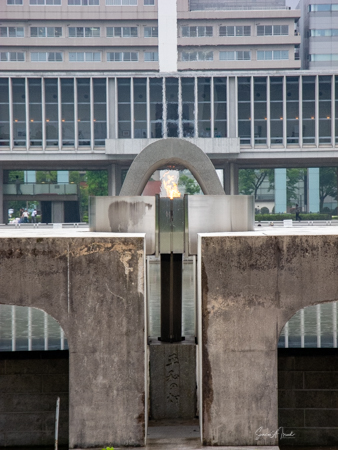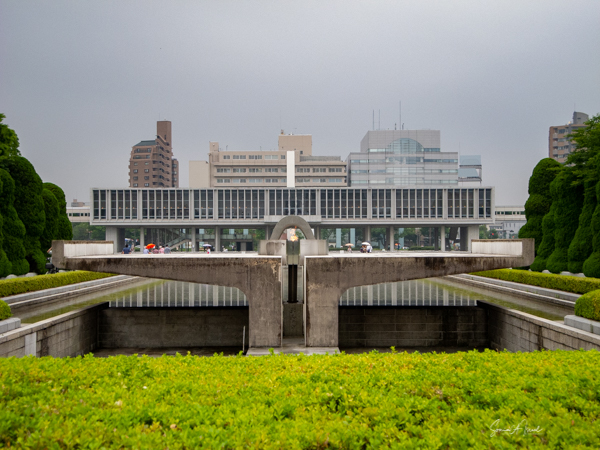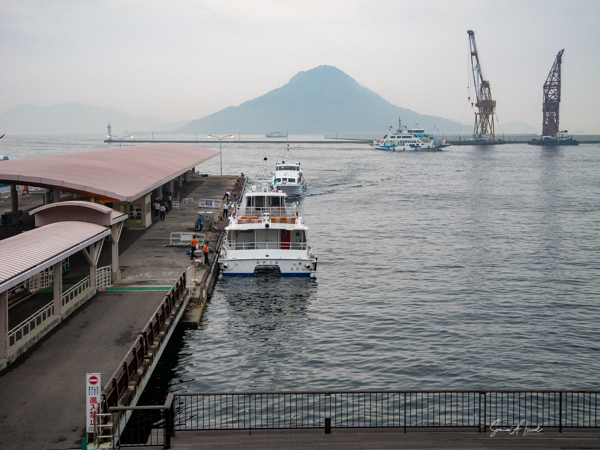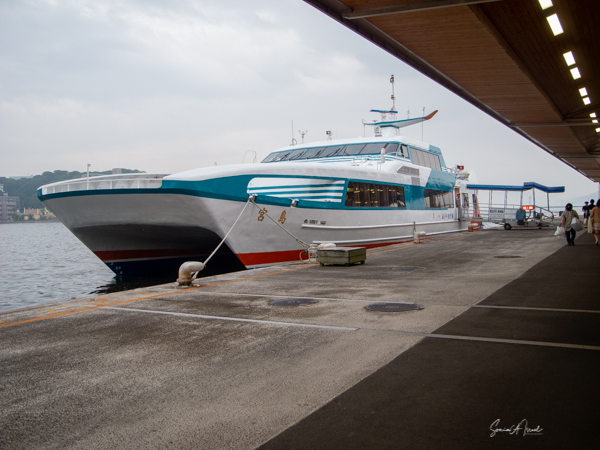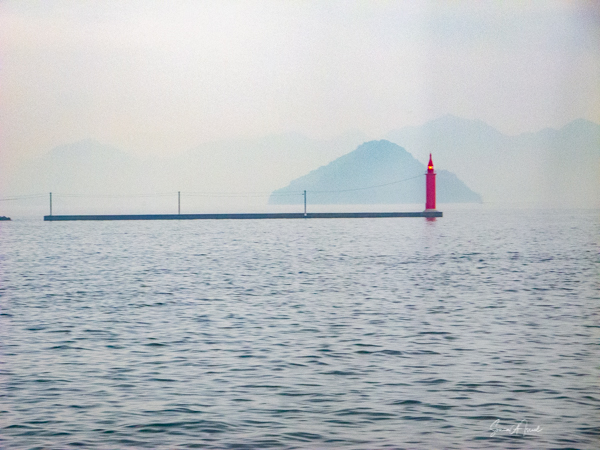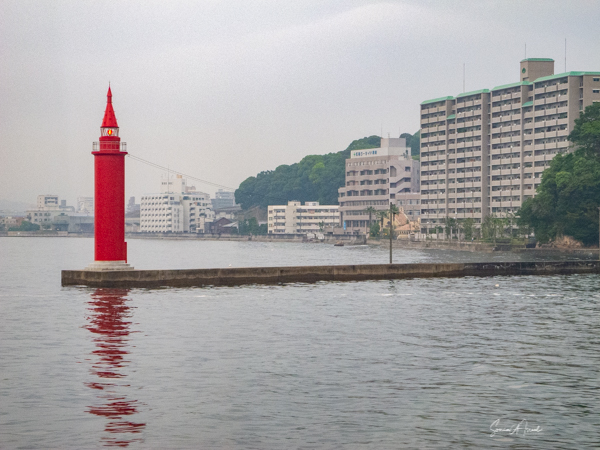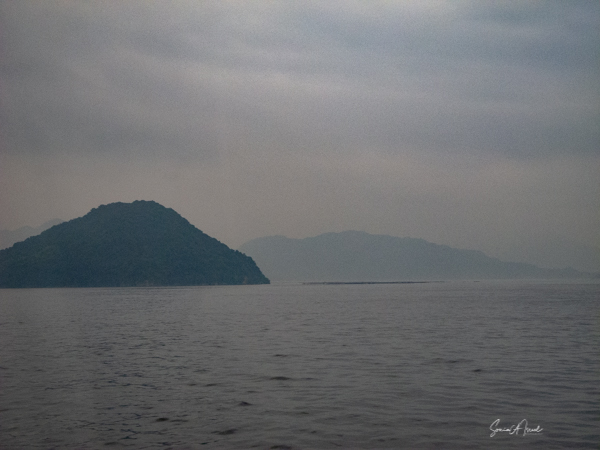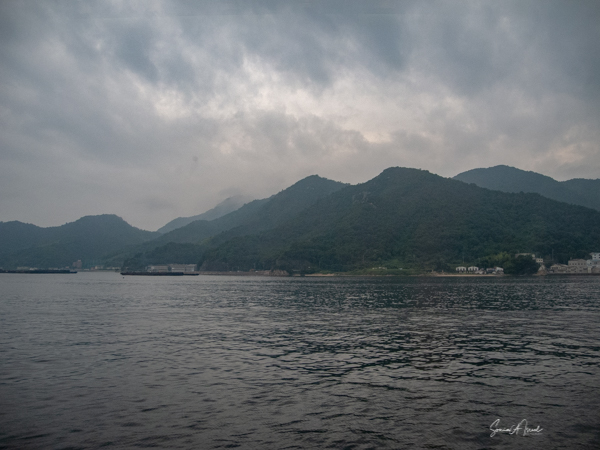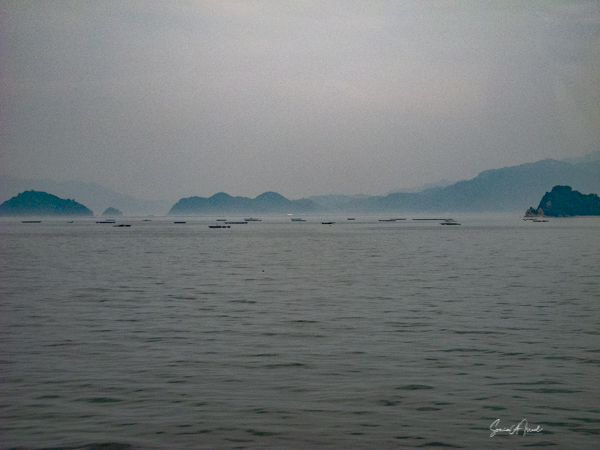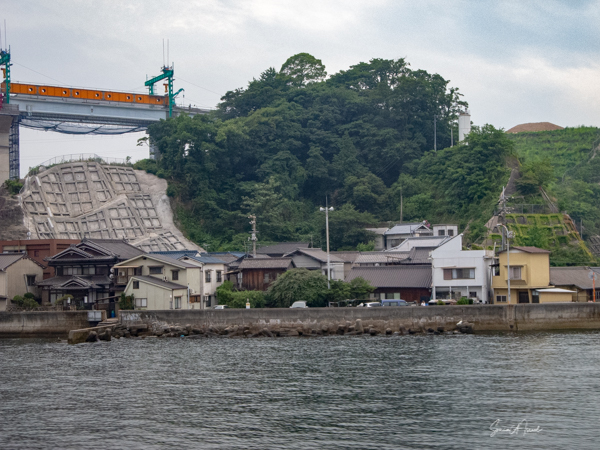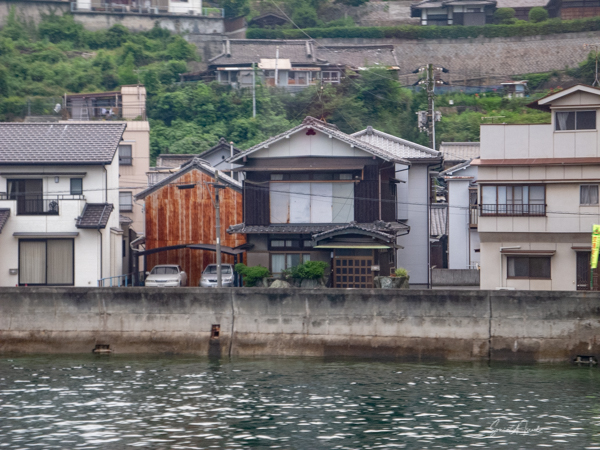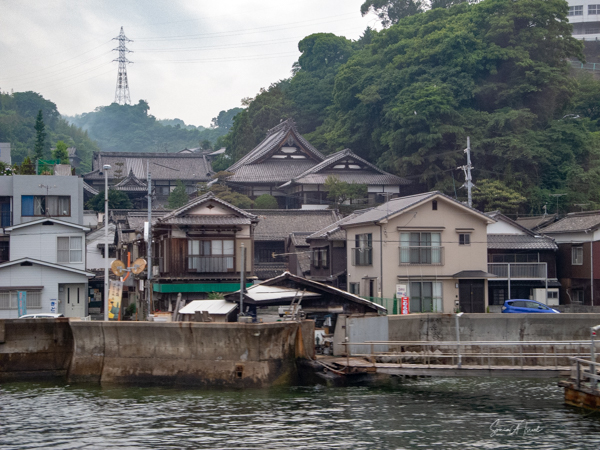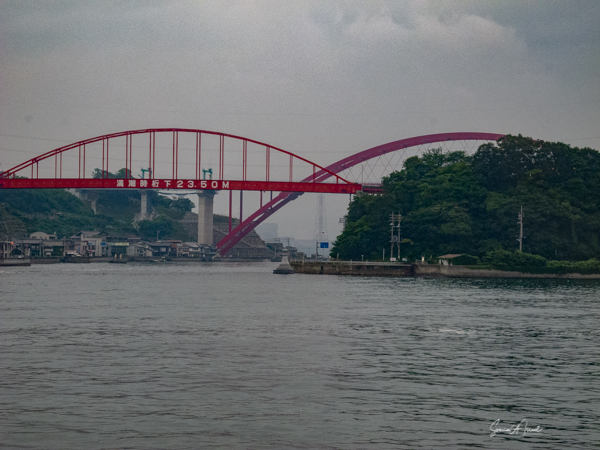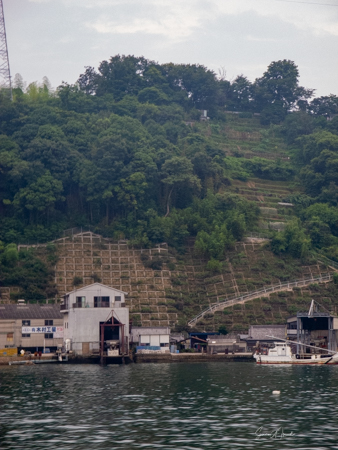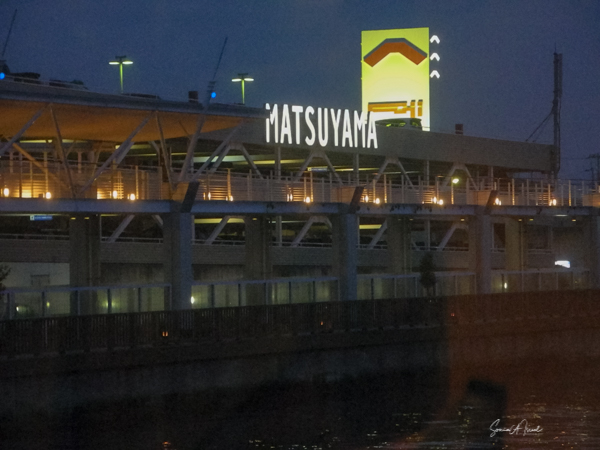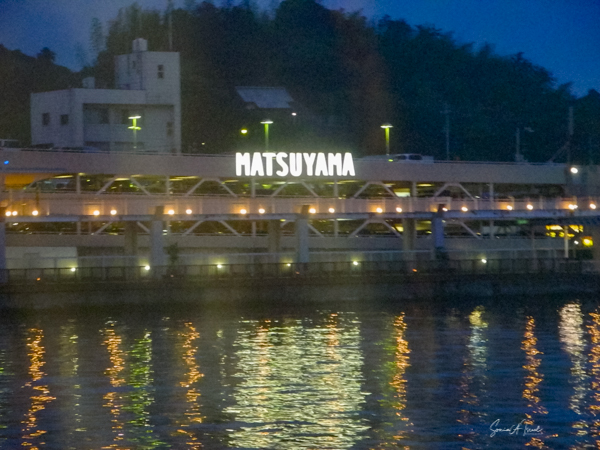Fukuyama
This was just one day of a business trip to Japan in 2012. But what a day!
Saturday, June 30, 2012
The high point of the trip was today. When we were sitting around in Yokohama with the whole team waiting for my talks, we chatted about where I had already been in Japan. I listed off the cities, and then said that I still wanted to go to Hiroshima to see the Peace Park and museum, but also mostly to see the Holocaust Education Center (HEC) near there. My uncle Benia had been an honored guest at this museum, and I had seen all the pictures and videos and heard all the stories. The director of the museum had treated Benia and his wife, my Aunt Pnina like a king and queen as Benia helped them gather pieces for their exhibit. By that evening, my colleague Kazuko asked me if instead of spending the day in Tokyo and then flying to Matsuyama in the evening as planned, would I like to take the train to Hiroshima and then a boat back to Matsuyama. Would I ever! I could not believe that they had actually arranged that just because I happened to mention I would someday like to go.
Bullet train to Fukuyama
So, on Saturday morning, Kazuko picked me up at 7:20 in the morning and we taxied to the Tokyo train station to catch the 7:40 bullet train to Hiroshima, which would stop in Fukuyama. I had a reserved seat in the Green Car (sort  of like business class on an airplane) but Kazuko sat in a regular car. When the train reached Yokohama, the first stop, Makoto Kida joined us (he also did not sit with me. Turns out they are not allowed to buy themselves tickets in the Green Car). The seats in the Green Car were indeed very comfortable, they reclined, had footrests and outlets for computers.
of like business class on an airplane) but Kazuko sat in a regular car. When the train reached Yokohama, the first stop, Makoto Kida joined us (he also did not sit with me. Turns out they are not allowed to buy themselves tickets in the Green Car). The seats in the Green Car were indeed very comfortable, they reclined, had footrests and outlets for computers.
The scenery was lovely as we went through the countryside. While the cities are all now modern with little signs of the old Japan, the country side is still full of traditional Japanese houses with the tiled, slanted roofs. There were rice fields as far as the eye could see (the picture that got away – a sole tree reflecting in a rice pad). We were going through the mountains, and in between the tunnels there would be a small village, often with a cemetery high on the mountain. At one point I got up to walk about and noticed 4 Geishas, in full kimonos and make-up sitting a few rows behind me. They must have gotten on in Kyoto. With their permission I took their photos. They also got off at Fukuyama although we will never know why.
The train was an express, but still stopped at Sinagawa, Yokohama, Nagoya, Kyoto, Osaka, Kobe, and Okayama  before reaching Fukuyama, the last stop before Hiroshima. This was our stop as this is where the Holocaust Education Center (HEC) is. The symbol of Fukuyama is the rose, and I would not know until later, how symbolic this was.
before reaching Fukuyama, the last stop before Hiroshima. This was our stop as this is where the Holocaust Education Center (HEC) is. The symbol of Fukuyama is the rose, and I would not know until later, how symbolic this was.
We left our luggage in lockers at the train station and took a taxi. The streets got narrower and narrower, but eventually we found it. Or so we thought. The address the taxi driver had was not the right place. But after a phone call we found it a few, small streets over.
And this is the rest of the story:
The HEC is the only “peace education center for children on the Holocaust” in Japan. It is dedicated to the 1.5 million children who were “ripped of their hope, their future and their lives.” The HEC was started by Father Makoto Otsuka. His father, the Reverend Takeji Otsuka, was the founder of Beit Shalom in Japan.
Beit Shalom
Let me first explain about Beit Shalom. Beit Shalom (House of Peace) is the headquarters in Kyoto of a pro-Israel group called the Japanese Christian Friends of Israel. It has about 10,000 members. They are well known for their choise, The Shinome (Dawn) Chorus which sings Israeli and Japanese songs all over Europe, the US and Israel. The main ideology of the group is to support Israel and they always include prayers for the coming of the Messiah. They emphasize peace between people and not conversion to Christianity.
The Rev Otsuka received a special revelation concerning the movement’s responsibilities toward Israel while a he was missionary in China. He says that he was instructed by the Lord to pray for the restoration of the nation of Israel,to pray for the spiritual renewal of Israel, which is the condition for the return of Christ, to pray for peace in Jerusalem, which is the key to the peace of the world; and to pray for the coming of the Messiah of Peace. Ten years after he received this revelation and began praying for Israel, the nation of Israel was established as an independent state. This provided important confirmation for Otsuka and his followers at an early stage of this movement’s development. This apocalyptic consciousness and the concern for the nation of Israel pervades all aspects of the movement today. Many members of clergy studied in Israel and speak Hebrew. Makoto Otsuka, the Rev Otsuka’s son, received the Honorary Fellow of Hebrew University in Jerusalem in 1994.
HEC – Holocaust Education Center
The idea for the HEC began in 1971 with a chance meeting in Netanya, Israel, between Makoto Otsuka and Otto Frank, Anne Frank’s father. While on a visit to Israel to perform with the chorus at an old age home in Netanya, a stranger approached the chorus members and asked if they’d sing a song for him in Japanese. It wasn’t until the next day — after the choir sang for him a second time — that the man asked his fateful question: “Have you read my daughter’s diary? I am [the] father of Anne Frank.”
Otsuka was touched by Otto Frank’s poignant story, and the two men forged a strong friendship. “It’s not enough to sympathize with 1.5 million Jewish children like my daughter,” Otsuka remembered Frank telling him, “you have to do something for establishing real peace.”
And thus in 1995, the HEC was born.
“It’s not enough only thinking, only reading — you have to do something. Action is most important,”
Undaunted by the task of collecting artifacts from scratch for a center that did not yet exist, Otsuka wrote 200 letters in Hebrew, appealing for help from Jewish organizations, museums and Holocaust survivors. “I said, ‘I don’t have money, but I have a will.’” He visited over 40 concentration camps, spoke with survivors from around the world and discussed the center in more than 300 interviews with Japanese media. With financial backing from Beit Shalom Japan, the center began to take shape — and the artifacts poured in. Including from my uncle, Benia Anolik.
“It’s not enough only thinking, only reading — you have to do something. Action is most important,” he said.
The HEC is the first institution devoted to educating Japanese children about “the systematic murder of 6 million Jews by the Nazi regime”. It is appropriately located 30 min by train from Hiroshima – the site of the first atomic bomb, a horror all its own. The HEC is dedicated to the 1.5 million children who perished in the Holocaust. Japanese students traveling to Hiroshima to learn about their own history often make a side trip to the HEC to discover a different dark part of the past. (Perhaps locating the museum in Hiroshima would have been even better….?). They average 4000-5000 children a year and all together have had over 110,000 visitors since opening its doors.
Otsuka built the museum in Fukuyama because at the time that is where he lived. It started in his church, but five years ago, moved to a new, larger building built from donations. All the items on display were donated from over 60 countries around the world, including from my uncle at Lochamei Hagetaot (my uncle’s kibbutz, the Ghetto Fighters).
Of course it was raining
On our visit, it was a rainy day, as befitted the occasion. It reminded me of my visit to the Vilna Ghetto with Benia where it was also raining and I described it as tears falling from the sky and from our eyes. The building is a brand new, modern stone and glass structure with etched glass of a scene of a young boy during the Shoah (Holocaust), sitting next door to traditional Japanese houses. The new building in fact won an Italian architecture prize.
I am Benia Anolik’s niece
The museum is based around the life of Anne Frank, and she is used as the mechanism to tell the story of life before and during the Holocaust. Even in the rain, the place was very bright and white. The entrance is into a large reception area with an open library. Kazuko asked the reception if Makoto Otsuka was there that day. Unfortunately he was home in Kyoto where he now lives. She told them that I was Benyamin Anolik’s neice. They ushered us into the office and told us that the Deputy Director General of the HEC was there. A young looking man came in with his wife and young daughter.
Akio Yoshia handed me his card and I handed him mine and I said, I am Benia Anolik’s niece. His face (and that of his wife’s) took on a look of astonishment, almost like he had seen a ghost. He was overwhelmed (as was I) and began to immediately talk about what an incredible man Benia is. He spoke in lavish terms about both Benia and Pnina, about their visit, about how Benia helped them with the museum. He spoke of him almost like a god.
They served us tea and cookies and we chatted, both in English and in Hebrew, until my Hebrew surpassed his. Then we switched back to English. I was amazed he spoke any Hebrew!
Touring the museum
He then took us on a tour. We began in the hall/gallery which is used for lectures. The walls are covered with paintings of the items in the museum. The idea is that they would not want to send the actual items out on loan when the exhibit travels to other cities, and so they send the paintings instead. The artist is Shigeki Murata. Akio showed me a book with Benia’s picture in it and a description of how he has helped the HEC. He then started a 10-minute video about the HEC for us to watch. In the middle of the movie, I was handed a phone. Makoto Otsuka was on the phone. He too was overwhelmed to talk to me and spent about 5 minutes telling me how wonderful my uncle and aunt are. He was recently in Israel and had tried to reach them, but could not. I assured him that they were both well. And then he started speaking Hebrew with me – a totally fluent Hebrew.
Anne Frank Rose Garden
From there we headed to the Anne Frank Rose Garden where there is a statue of Anne, and she is surrounded by Anne Frank roses. The window above the door leading to the garden is etched with butterflies after the poem by Pavel Friedman (I never saw another butterfly…). There is a room where at the end of the visit, the children can sit and read or color and decompress (similar to Yad la Yelid at Kibbutz Lochamei Hagetaot in Israel, my uncle’s kibbutz).
Zachor (Remember)
We then headed up a wide, very white open staircase to the second level. At the top of the stairs is a single work in Hebrew – Zachor (Remember). And as you turn the corner, there is a wall made of Jerusalem Stone with a Menorah.
The exhibit then begins with photographs and items from the Shoah, including torn Torahs, clothes, ID cards, yellow stars. The exhibit is all on the level for children to understand. There is a room with life before the war with pictures of Anne and her family. There is a replica of a Ghetto wall with five real bricks from the Ghetto. There is a room with a gate over it – a replica of the one at Auschwitz (Arbiet macht frei), a model (diorama made by hand) of the camp, a large wall size photo of the camp, and in front of it a glass display of a striped concentration camp uniform, donated by Benia. There is a statue of Janusz Korczak with his children. (As an aside, Janusz Korczak was a Polish Jewish educator, children’s author, and physician who ran an orphanage in Warsaw. He was so well loved by all, that he was repeatedly offered refuge from the Nazi’s, but he refused and went with “his children” to Treblinka were he and all the children were killed.) There is a replica of the room behind the staircase where Anne lived with a facsimile of her diary and the typewriter that Otto Frank used to edit her book. There was a special exhibit of Terezan, with copies of pictures painted by the children.
- This was donated by my uncle
- Janusz Korczak
- facsimile of Anne’s diary
Righteous Among the Nations
There is also a section for the Righteous Among the Nations which includes Schindler and Chiune Sugihara who was  the Japanese consul general in Lithuania during the war. He ignored all instructions from his government and issued several thousand passports with a Japanese transit visa to the Jews of Kaunas (Kovno). It is believed that he saved about 10,000 lives. While his own career was sacrificed and the Japanese government made his life difficult upon his return to Japan (for disobeying orde
the Japanese consul general in Lithuania during the war. He ignored all instructions from his government and issued several thousand passports with a Japanese transit visa to the Jews of Kaunas (Kovno). It is believed that he saved about 10,000 lives. While his own career was sacrificed and the Japanese government made his life difficult upon his return to Japan (for disobeying orde rs), he was recognized years later by Yad Vashem as a Righteous.
rs), he was recognized years later by Yad Vashem as a Righteous.
And Kazuko and Makoto read every word under every picture. They knew about Anne Frank having read her book as children, but not much else. This is what the education is all about.
Remembrance Room
The last room was the Remembrance Room. It is the only dark room in the center. There are but a few chairs, and a large stained glass and wood alter which is lit from behind. That is the only light in the room. In the center is a glassed display of a single child’s shoe which symbolizes the 1.5 million children who were murdered, and the shoe sits on top of a brick monument filled with ashes from Auschwitz.
Kaddish
On the wall are the names of 6 of the extermination camps – all in Hebrew. There were three Yahrzeit candles set up and they asked each of us (Kazuko, Makoto and me) to light one. (Yahrzeit means anniversary in the Yiddish language and is the anniversary date of someone’s passing in the Jewish calendar.) They then handed us each a rose from the garden which we placed by the candles. I asked if I could say the Kaddish prayer (mourners prayer) and I did, with tears running down my face. And as I recited the Kaddish, I thought about my mother and father who survived the horrors of the Holocaust, and my grandparents and millions of others who did not.
Ani Ma’amin
When I finished, I looked up and the room was filled with all the staff and volunteers. And then they asked if we could all sing Ani Ma’amin. In Hebrew. The entire staff sang with such feeling. Here I was in Japan, IN JAPAN, and  these people were singing Ani Ma’amin in Hebrew because they understood how important it is to always believe and always remember and always teach so that no one else ever forgets. It was a very powerful moment.
these people were singing Ani Ma’amin in Hebrew because they understood how important it is to always believe and always remember and always teach so that no one else ever forgets. It was a very powerful moment.
[Side note – for those of you who do not know what Ani Ma’amin (meaning “I believe”) is, it is a song/prayer about the coming of the Messiah and how we will be saved. It was written in the twelfth century by Maimonides and is based on his Talmudic Psalm Number Twelve from The Articles of Faith entitled “Ani Ma’amin” (I Believe). It was sung by many Jews during the Holocaust, even as they entered the gas chambers as they clung to his words for hope for the future and for humankind. “I believe with complete faith in the coming of the Messiah. And even though he may tarry, nonetheless I will wait for him.”]
1.5 million beads
The exhibit ends with a sculpture of a large, wooden Magen David with six clear columns in front of it filled with, yes you guessed it – 1.5 million beads, representing the 1.5 million children killed, that were collected by children all over Japan (similar to the Paper Clip Project).
The seed of the Horse Chestnut Tree
And outside stands a small tree, a horse chestnut tree, which was raised from a seed of the tree Anne Frank used to see from her hiding place.
And the education continues
But it was not over yet. Akio told me that he was expecting a business man who was bringing all his workers to see the museum, about 50 men. He asked if I didn’t mind waiting and then saying a few words to them. They were all in the gallery and Akio introduced me as the niece of Benia Anolik who had helped them build the HEC. He had them all open the introductory book and look at Benia’s picture.
And then I got up and spoke while he translated. I had no words planned as this was so impromptu. But I spoke from the heart. I spoke about how our lives – theirs and ours – had all held tragedy and that for each of us it was important never to forget. I spoke about how this museum was so special, not because of the beautiful structure or even because of the artifacts within, but because of the way it teaches about how the world should be and how the horror of the past can never, never, never be repeated. It was special because people like them were here learning about our Holocaust and by them learning, and passing the knowledge on to their children, the world will never forget.
And they clapped and clapped. And I bowed in the Japanese style and said Arigato.
And then we left. They gave us each a copy of the book of paintings by Shigeki Murata, one of many items in their gift shop.
And then the entire staff stood outside, in the rain, waving to us until we could no longer see them.
And then off to Hiroshima
From there we had lunch and then took the 30 minute train to Hiroshima to learn about the Japanese’s suffering during WWII and the dropping of the first atomic bomb.
Hiroshima
We arrived in Hiroshima and took a taxi to the Hiroshima Peace Memorial Park. I was taken aback by the beautiful statues of women both in and outside of the station.
We grabbed a taxi to take us to the memorial. Our taxi driver was very knowledgeable having grown up in Hiroshima. He was born about 7 years after the bombing and so the city had not yet been totally rebuilt. His  aunt lived across the street from the epicenter. Needless to say, she did not survive. He drove us around, explaining everything (none of which I could understand of course, but Kazuko and Makoto translated for me). He waited for us at each spot while we got out, walked around and took it all in. They showed us where the bombs were meant to be dropped – the target – which was the t-intersection of the city, but because of the winds that day, the bomb drifted and exploded 600m above the domed building which still stands in ruins today as a monument. The rest of the city was leveled. Literally.
aunt lived across the street from the epicenter. Needless to say, she did not survive. He drove us around, explaining everything (none of which I could understand of course, but Kazuko and Makoto translated for me). He waited for us at each spot while we got out, walked around and took it all in. They showed us where the bombs were meant to be dropped – the target – which was the t-intersection of the city, but because of the winds that day, the bomb drifted and exploded 600m above the domed building which still stands in ruins today as a monument. The rest of the city was leveled. Literally.
The Hiroshima Peace Memorial Park
The Hiroshima Peace Memorial Park is dedicated to the legacy of Hiroshima, the first city in the world to be attached by a nuclear bomb by the United States, and to its innocent victims – all 140,000 of them. The location of the park was once the city’s busiest downtown area, filled with commercial buildings and private residences. What was left after the bomb was a large open field, which was transformed into this memorial, which is made up of numerous monuments and museums. As it says, the purpose of the Peace Memorial Park is not just to memorialize the victims, but to also establish the memory of nuclear horrors, thus advocating world peace.
All the memorials here in Hiroshima convey the horror of nuclear weapons and appeal for world peace. There are monuments for every group that died (or so it seems). There is even a monument in memory of Norman Cousins (I have no idea why).
Now a thriving metropolis
Hiroshima is now a bustling city with over 1 million inhabitants. I realized I think of Hiroshima as an event (like the Holocaust), but it is a city that underwent a horrible event. We say “she survived the Holocaust; he survived Hiroshima.” But the event was really the dropping of the atomic bomb on Hiroshima. And so, like any other city, it was rebuilt and is now a thriving metropolis.
Atomic Bomb Dome
Our first stop was the Atomic Bomb Dome, which is now a UNESCO World Heritage Site. On August 6, 1945, at 8:15 in the morning, the first ever atomic bomb exploded right above this building. Surprisingly, the frame of the dome and the frame of parts of the building remained standing and today symbolizes the A-bomb on Hiroshima. It was the Hiroshima Prefectural Commercial Exhibition Hall and later became the branch office of the Chugoku Shikoku Public Works Office of the Internal Affairs Agency and the offices of the Hiroshima District Lumber and Japan Lumber Control Corporation. When the atomic bomb exploded, it ravaged the building instantly. Heat blazing from above consumed the entire building, killing everyone in it. Because the blast attacked the building from virtually straight overhead, some walls escaped total collapse. Along with the wire framework of the dome, these form the shape that has become a symbol.
Children’s Peace Monument
One of the most moving monuments was the Children’s Peace Monument.
Sadako Sasaki was 2 years old when the bomb was dropped. Ten years later she developed leukemia and was hospitalized, dying. She began making origami cranes (good luck) and tried to reach 1000 of them. But she died before she was done. School children all over Japan began making cranes and the Children’s Peace Monument is dedicated in her honor to all children. It is a bell with a girl and a crane on top, and two children (a boy and a girl) on either side – all soaring. And it is surrounded by cubicles filled with thousands of origami cranes.
Memorial Tower dedicated to the Mobilized Students
In 1944, there was a labor shortage so the Japanese government enacted the Student Labor Service Act which required students in middle school and higher grades to perform labor service in munitions factories. Later that year, many of them were required to participate in tearing down homes and other buildings (building demolition). The purpose was to create fire-breaks to limit the expansion of fire in the event of air attacks. In Hiroshima City. Of the roughly 8,400 students in the national upper level schools, about 6,300 died on the day of the bombing. Most students working at various industries around the city were also killed. After the war, the government only permitted mobilized students killed in the atomic bombing or in air strikes whose names and date of death were known to be enshrined in Yasukuni Shrine (another shrine dedicated to the children). In response to this, bereaved families began a movement to create a list of the dead and donated funds to build this tower.
Monument of The Hiroshima District Lumber Control Corporation Shape
This monument was built in prayer for the souls of those who died while on duty at the Lumber Corporation, and for everlasting peace in the world. The characters “Irei” (consoling the souls of the departed) are inscribed on the front of a large stone, which to me looked like a heart. This is what is engraved: “This dome housed the headquarters offices of 260 staffers of The Hiroshima District Lumber Control Corporation Japan’s timber control agency during World War II. Over 100 executives and regular employees tragically died while on duty in and around the dome due to the A-bomb’s detonation in the sky immediately above at 8:15 a.m. on August 6, 1945. When permanent preservation of the Atomic Bomb Dome had been decided, at the suggestion of then-president Koichi Tanaka, surviving executives and regular employees gathered and built this monument in prayer for the repose of victims’ souls, as well as for everlasting peace in the world. Workers of the two timber control agencies Japan Lumber Corporation Hiroshima Branch and Hiroshima Shipping Timber Co. who died while on duty are honored collectively.”
Hiroshima Peace Museum
We made our way to the Hiroshima Peace Museum. The museum is painful to walk through, but, like the Holocaust museums, everyone should visit it and learn about what happened, in this case, the devastating effect of an atomic bomb.
As you walk through the museum, you begin by getting a history of Hiroshima before the war. There is a section on why the bomb was dropped and how the 4 cities were chosen. One interesting fact is that Kyoto was targeting as one of the 4 cities on the original list, but they decided to remove it because of all the beautiful shrines there. So they knew that the bomb would devastate anything it reached. And another random city was hit instead.
There are belongings left by victims, photos and other material that conveys the horror of that event, including a watch that stopped at 8:15. There is a diorama of Hiroshima before the bomb, and after the bomb. The entire city was flattened. 140,000 people died. And they died an agonizing death. Fire spread everywhere. Skin peeled off. The stories and pictures are truly horrific. They had video testimony from survivors, which also reminded me of the video testimonies in Holocaust museums. I, of all people, know this was not the same. Nevertheless, it too was a horrific event.
The tour of the museum ends with a political exhibit on the horror of nuclear weapons and a call for a peace. I must agree.
The Cenotaph of the A-bomb Victims – Memorial Monument for Hiroshima, City of Peace
Outside the museum is the memorial. There is a concrete dome, The Cenotaph of the A-bomb Victims – Memorial Monument for Hiroshima, City of Peace. It is surrounded by the Pond of Peace and at the other end of the pond is the Flame of Peace. Behind in the distance is the A-bomb Dome. When you stand in front of the Cenotaph, you see the eternal flame and the Dome of Hiroshima. Under the concrete dome stands a concrete casket. Each year on August 6, they place the names of those survivors that died that year.
Interestingly, the morning English language Japanese newspaper had a short article about Harry Truman’s grandson planning a visit to Nagasaki and Hiroshima. He is writing a book about the events and he will be the first from Truman’s family to visit. Truman of course, was President during this period when the US dropped the A-bomb.
The Peace Flame
The Peace Flame is another monument to the victims of the bomb that destroyed Hiroshima, but it has an additional symbolic purpose. The flame has burned continuously since it was lit in 1964, and will remain lit until all nuclear bombs on the planet are destroyed and the planet is free from the threat of nuclear annihilation.
- Flame of Peace
What a day!
All in all, it was a physically and emotionally exhausting day. I would not have traded it. I am so grateful to have been given this chance to visit these two amazing places all in the same day.
Heading back by boat
We took a large Catamaran from Hiroshima to Matsuyama. It was overcast, but nevertheless, the one hour ride through the fog past islands and villages was hauntingly beautiful.
 We were all exhausted, had dinner in the hotel (yet another amazing Japanese meal where the food just kept coming). And then retired to our rooms to collapse.
We were all exhausted, had dinner in the hotel (yet another amazing Japanese meal where the food just kept coming). And then retired to our rooms to collapse.
